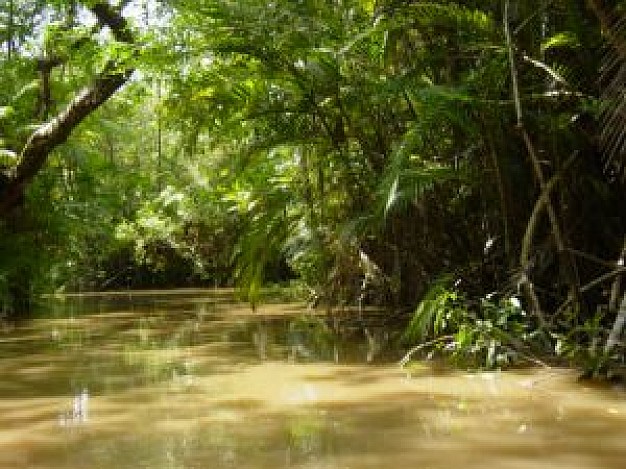The Pink Dolphins of the Amazon
 Fact: There are pink dolphins in the Amazon River
Fact: There are pink dolphins in the Amazon River
The largest of all freshwater dolphins in the world, the Amazon River Dolphin is either pale grey or light pink in color. It can attain a weight of 217 pounds and a length just shy of 8 feet for a mature female. Possessing a very long beak uniquely adapted to feeding in the Amazon River floodplains, this species can also rotate its neck at near 180 degree angles, an evolutionary advantage designed to help the dolphin negotiate sharp turns and submerged vegetation while swimming in its natural habitat.
Originally classified in 1817, the Amazon River Dolphin’s natural range includes much of the Amazon and Orinoco Rivers, where it has penetrated further inland than most of us might picture when we think of dolphins. Traditionally salt-water mammals, dolphins and porpoises may be found in most oceans and seas across the planet. The particular species of pink dolphin living in the Amazon River basin diverged from its oceanic ancestors about 15 million years ago.
Known by locals as Boto, Bouto or Bufeo, the Amazon River dolphin may be found in Bolivia, Colombia, Ecuador, Peru, Venezuela, and Brazil. Amazonian folklore tells of encantados, shape shifters, who live as pink dolphins during the day and transform into attractive young men and women in the evening, seducing and producing illegitimate children with local humans. Naughty creatures, those dolphins.
Brazil is well known for its cars; its love of soccer; the martial arts of Capoiera and Brazilian Jiu Jitsu; the festive atmosphere of Rio de Janeiro; Bossa Nova; everyone’s favorite bikini line; and of course the Portuguese language itself. Why not explore the many wonderful attractions Brazil has to offer, along with some interesting tidbits on the country in our game of True or False Brazilian facts?


